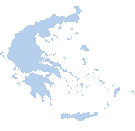|
Fire danger is the results of both constant and variable fire danger factors affecting the development, spread and difficulty of control of fires and the damage they cause. Constant factors are those that change slowly and vary with location. Variable factors change rapidly with time but can influence extensive areas.
|
Constant factors
* Slope
* Fuel
Variable factors
* Wind
* Relative humidity
* Temperature
|
Fire Danger Index is a value that shows in which level the danger is. Even if it is dificult to embody in a single, practical index the fire danger, there are many attempts who try to achieve this. Like FWI (Fire Weather Index), CBI (Chandler Burning Index). FWI is more complicated and needs time and several measuremends to have his value. CBI is more simple and has a right now value. It depends from the area which one to use. The Fire Danger Index shows two things. The first is how low or extreme is the possibility to have a fire and the second is how low or extreme is the difficulty to suppress a fire that has allready started and spreads.
|
The Fire Danger Index (FDI)

LOW MODERATE
HIGH VERY HIGH
EXTREME
|

|
Chandler Burning Index (CBI) as (FDI)
The *Chandler Burning Index (CBI) uses the air temperature and relative humidity to calculate a numerical index of fire danger. That number is then equated to the Fire Danger severity of either extreme, very high, high, moderate, or low. It's based solely on weather conditions with emphasis to relative humidity and no adjustment for fuel moisture. CBI behaves linearly to air temperature changes and exponentially to relative humidity changes. So a small rising or falling of the relative humidity, changes dramatically the vallue of that index.
*Craig C. Chandler is a fire behavior specialist with first-hand ex-perience on more than 30 major fires.
After graduating from the University of California (1951), he joined the Experiment Station in Berkeley, taught at the University of California School of Forestry (1953-1956), returned to the Forest Service and became project leader of conflagration control research at the Pacific Southwest Research Station.
|
|
|
|
| LOW |
|
Fuels do not ignite readily from small firebrands although a more intense heat source, such as lightning, may start fires in duff or punky wood. Fires in open cured grasslands may burn freely a few hours after rain, but woods fires spread slowly by creeping or smoldering, and burn in irregular fingers. There is little danger of spotting. |
|
| MODERATE |
|
Fires can start from most accidental causes but, with the exception of lightning fires in some areas, the number of starts is generally low. Fires in open cured grasslands will burn briskly and spread rapidly on windy days. Timber fires spread slowly to moderately fast. The average fire is of moderate intensity, although heavy concentrations of fuel, especially draped fuel, may burn hot. Short-distance spotting may occur, but is not persistent. Fires are not likely to become serious and control is relatively easy. |
|
| HIGH |
|
All fine dead fuels ignite readily and fires start easily from most causes. Unattended brush and campfires are likely to escape. Fires spread rapidly and short-distance spotting is common. High-intensity burning may develop on slopes or in concentrations of fine fuels. Fires may become serious and their control difficult unless they are attacked successfully while small. |
|
| VERY HIGH |
|
Fires start easily from all causes and, immediately after ignition, spread rapidly and increase quickly in intensity. Spot fires are a constant danger. Fires burning in light fuels may quickly develop high intensity characteristics such as long-distance spotting and fire whirlwinds when they burn into heavier fuels. |
|
| EXTREME |
|
Fires start quickly, spread furiously, and burn intensely. All fires are potentially serious. Development into high intensity burning will usually be faster and occur from smaller fires than in the very high fire danger class. Direct attack is rarely possible and may be dangerous except immediately after ignition. Fires that develop headway in heavy slash or in conifer stands may be unmanageable while the extreme burning condition lasts. Under these conditions the only effective and safe control action is on the flanks until the weather changes or the fuel supply lessens. |

|

|













